East Prussian monuments of the First World War
" Anyone who travelled through East Prussia between the two world wars found graves in cemeteries, as well as in open fields, on the streets and even in private gardens, which with inscriptions and iron crosses testify that soldiers are buried in them, a reminder of the difficult struggle of 1914-15 " - with these words begins the work of Max Dehnen "War graves in East Prussia 1914/15".
How burials appeared
Indeed, in 1914-15 East Prussia became the site of fierce clashes, from August 1914 to March 1915 there were battles and fights on its territory: the Stallupönen clash, the Battle of Gumbinnen-Goldap, the Battle of Tannenberg, the Battle of the Masurian Lakes, the Battle of the Augustow Woods and other, smaller events. Numerous military graves scattered throughout the region became a silent reminder of them.
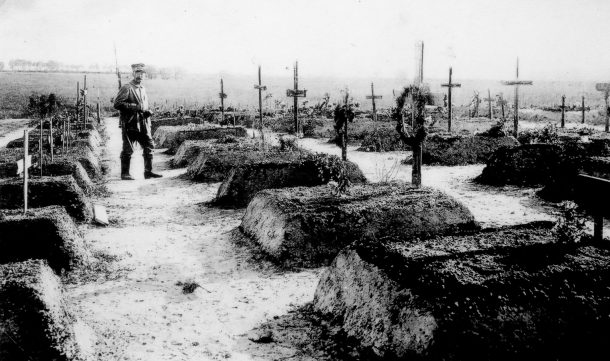
After each battle, special teams of military units, often together with local residents, walked around the battlefield and organized burials of their own and other people's fallen soldiers. If there was a cemetery nearby, then the dead soldiers were buried there, but more often it had to be done directly on the battlefield, where they met their death.
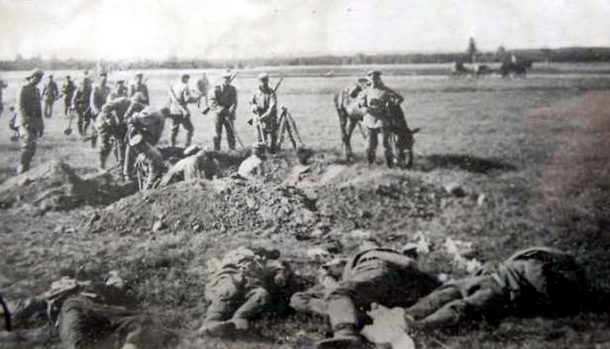
The Germans buried both their own and others, in this case, Russian soldiers. But the Russian troops did not leave the bodies of their enemies on the battlefield either. Here, for example, are the memoirs of cavalryman Georgy Goshtovt, described in his book "His Majesty's Cuirassiers in the Great War" (1938):
“In the village of Gross Laut, the bodies of the killed German cuirassiers of the marching squadron of the 3rd regiment were collected and buried .
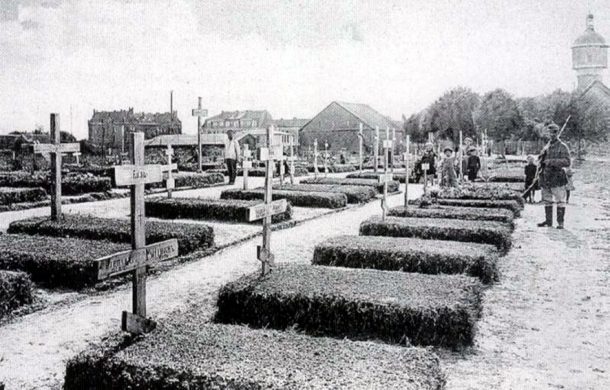
Some systematicity in the burial of soldiers was observed in cities that had garrison cemeteries or where reserve hospitals were assigned part of the city cemetery. In a number of cities, it was even possible to bury in cemeteries according to religious denominations - Evangelical, Catholic, Jewish. The fallen were buried with military honors, whether it was a German or a Russian soldier - it did not matter. The graves of Russian soldiers, like all the burials in the cemeteries in which the dead found their final resting place, were maintained and put in order by the communities.
After the First World War, wherever there were graves of German soldiers, reburials began to be made to large military cemeteries. These activities were carried out in accordance with the Geneva Convention on the Right of the Dead to a Burial. For East Prussia and the burials on its territory, this had little significance, since the local population was “closely attached” to the fallen. In most cases, the inhabitants refused to transfer the graves to general military cemeteries, and sometimes even reburied their loved ones who died on other fronts in local cemeteries.
This attachment was explained by the fact that in 1914-15 this territory was defended by local, East Prussian and West Prussian regiments. The names written on the gravestones were those found in most of the towns and villages of East Prussia.
Numerous soldiers' graves sometimes significantly hindered the cultivation of the fields, but no landowner insisted on reburial, on the contrary, he was proud of the fact that he could look after a military burial site on his land. Communities and private landowners competed in looking after the graves, in the summer they were buried in flowers and greenery, and the graves of Russian soldiers were not forgotten. Since the relatives of the fallen Russian soldiers had practically no opportunity to visit their graves, in many cases German church communities and youth groups took on the care of such graves.
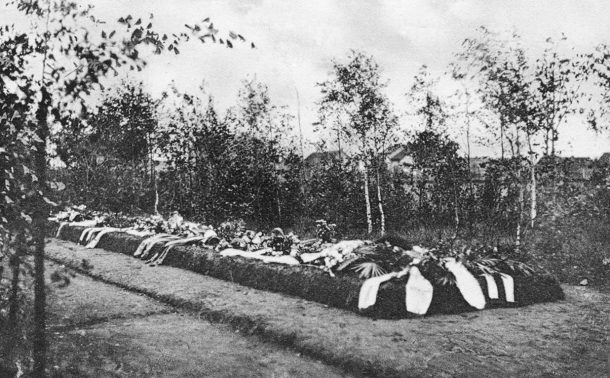
Major burial sites of the First World War in East Prussia
In 1939, there were about 2,200 military burials in East Prussia, from large cemeteries to individual graves, in which more than 61 thousand people were buried. In addition to the buried Germans and Russians, there were representatives of other countries - Austrians, Englishmen, Belgians, Romanians, French, who ended up on the territory of East Prussia as prisoners of war.
All burials can be divided by the number of buried:
– cemeteries with a small number of buried people, from 1 to 20 people – approximately 4/5 of the total number of cemeteries (more than 1,750 cemeteries);
– with a burial volume of 500 people or more – approximately 10 cemeteries;
– with a burial volume of 1000 or more people – approximately 5 cemeteries;
– the rest are cemeteries with the number of buried people from 20 to 500 – there are more than 400 of them.
The largest cemetery was the hospital cemetery in Königsberg (Kaliningrad), it was called the New Military Cemetery (Neuer Militärfriedhof). This cemetery was the final resting place for 2904 soldiers, of which 2624 were German, 263 Russian, as well as Austrians, Englishmen, Romanians, an American, an Italian and a Frenchman.
The second major burial site was the military cemetery in Heilsberg (Lidzbark Warmiński, Poland). It contained 2,761 people: 2,081 Russians, 506 Romanians, 53 French, 49 English, 45 Belgians, 19 Italians and 8 Serbs. Most of them were prisoners of war from a camp near the town who died during a typhus epidemic.
In the cemetery in Orlau (Orłowo, Poland), as a result of the heavy fighting during the Battle of Tannenberg, which took place near this city, 1,427 soldiers were buried.
The burial site in Mattiskemen (Sovkhoznoye, Nesterovsky district of the Kaliningrad region) was formed directly on the field of the Gumbinnen-Goldap battle, one of the fiercest clashes between Russian and German troops took place in this place. 1084 soldiers are buried here.
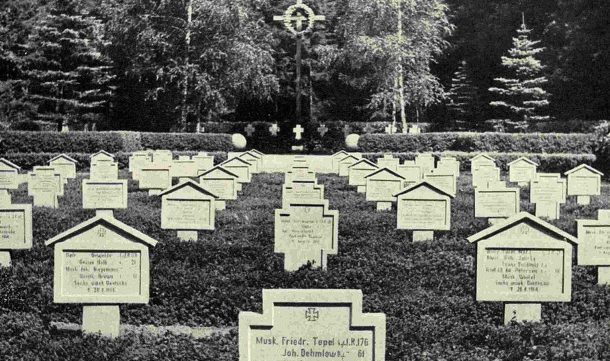
There are 1,000 soldiers buried in the Forest Cemetery in Tilsit (Sovetsk). Initially, soldiers who died in the hospital were buried there, and later prisoners of war.
Of the large military cemeteries located in the Kaliningrad region, two more burials also stand out. The first is in Göritten (Pushkino, Nesterovsky district), where a total of 797 people are buried, of which 601 are Russian soldiers. The second is the burial in Gavaiten (Gavrilovo, Ozersky district), where 734 soldiers are buried.
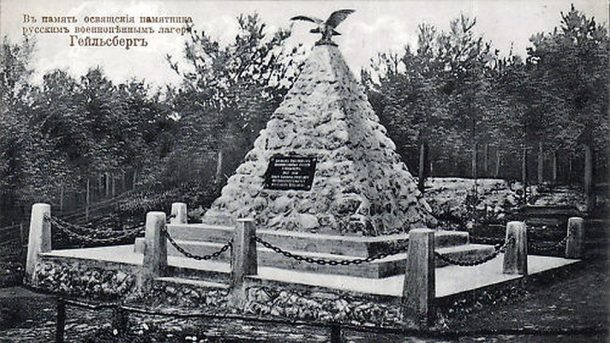
Improvement of military burial sites in the first half of the 20th century
In general, all burials, whether large cemeteries in cities or single graves in the forest, were maintained in proper condition, and crosses or slabs were installed on each grave. Initially, all military burials looked the same - earthen mounds with simple wooden crosses.
It should be noted that immediately after the fighting in East Prussia ended and the fallen soldiers were buried, images of military cemeteries and burials became popular motifs on German postcards. And later, monuments to those who died on the battlefields of East Prussia regularly appeared on postcards as a landmark of many East Prussian cities and towns.
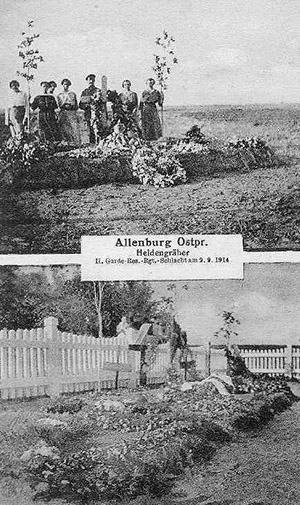
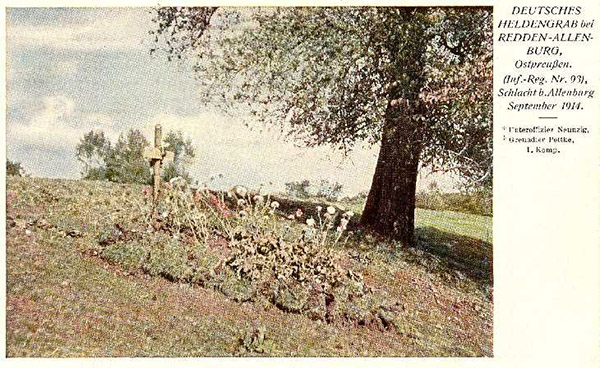
The battles of the First World War were still raging, and in Russia and Germany competitions were already being held for the improvement of military burial sites and projects for memorial signs for them.
For example, the project of a tombstone for fallen soldiers of the First World War, developed by the Russian architect Joseph Langbard and awarded the first prize of the Imperial Society of Architects-Artists (OAKh), is well known. The competition was held on the instructions of the Main Council of the All-Russian Society for the Perpetuation of the Memory of Fallen Soldiers (1916).
In Germany, competitions were also held in which famous architects participated. For example, several military burial projects by the architect Friedrich Lahrs are known, published in a special issue of the yearbook of the German Works Association ( Deutscher Werkbund ).
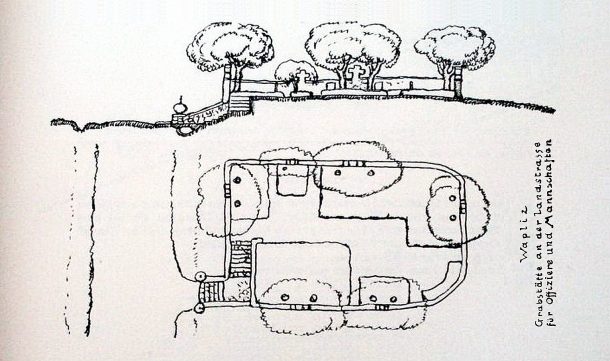
In 1917, in Königsberg, in the Luisenval Park (today the Central Park of Culture and Leisure of Kaliningrad), an exhibition of small architectural forms was held, where projects for grave crosses and slabs were exhibited, which were planned to be installed on military graves.
Architectural magazines published articles with projects for the improvement of military burial sites, and special catalogues and collections were published.
The projects included proposals to plant "heroic groves" (Heldenhain). And, ultimately, such groves appeared in Gerven (Priozernoye settlement, Gusevsky district) and Memel (Klaipeda, Lithuania).
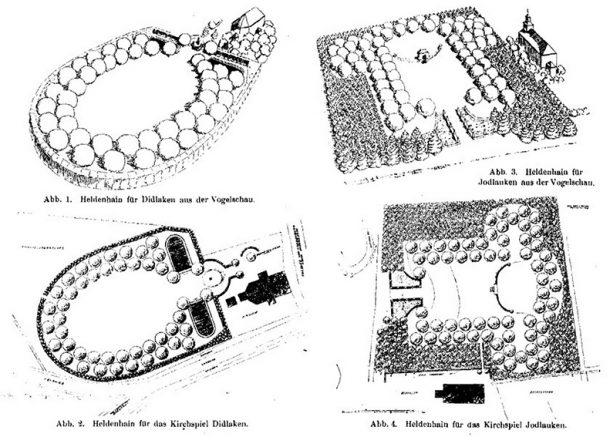
As a result, by the tenth anniversary of the events of 1914, many burial sites had undergone improvement work. Concrete crosses and slabs were installed, monuments and memorials were erected. In each krais (district), there were certain construction companies working on the improvement of burial sites, and soon one could see corresponding advertisements in magazines and newspapers.
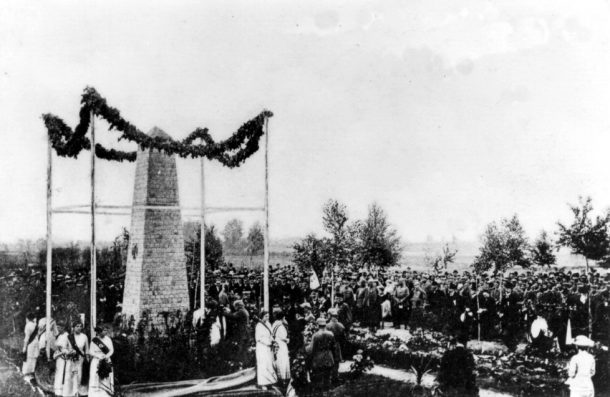
The grave crosses were not distinguished by any special architectural refinements, they were small, with an image of the Iron Cross and a short inscription: the surname, regimental affiliation and date of death of the soldiers. On Russian crosses and slabs, an Orthodox cross was predominantly depicted and a laconic inscription was placed indicating the number of those buried, for example, "Hier ruhen 6 unbekannte russische krieger" ("Here lie 6 unknown Russian soldiers").
Monuments to those killed in the First World War
On the eve of the tenth anniversary of the outbreak of World War I, Germany began erecting monuments in honor of local residents who died on various fronts. Almost every settlement in East Prussia erected various monuments and memorial signs to residents of the city or church parish (Kirchspiel). For the most part, these monuments stood near churches, laid out of processed stones, with marble slabs on which the names of the residents of the church parish were listed. Or they were huge boulders with an image of the Iron Cross or a German helmet and a laconic inscription, for example:
"The Homeland is for the Heroes " ;
"Treue um Treue" ("To the faithful for faithfulness");
"To Our Fallen Heroes" ("To Our Fallen Heroes").
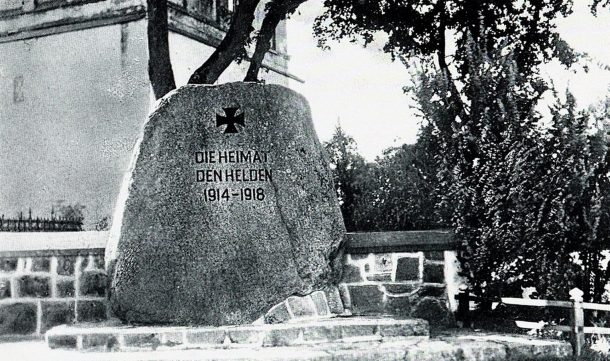
But some of the memorials were quite majestic. These included, in particular, the monument near the city of Allenburg (Druzhba), erected on September 7, 1924 in honor of the soldiers of the 1st and 2nd Guards Reserve Divisions who died on September 9, 1914, while trying to break through to the city held by retreating Russian troops. Field Marshal Paul von Hindenburg was present at the unveiling of this monument.
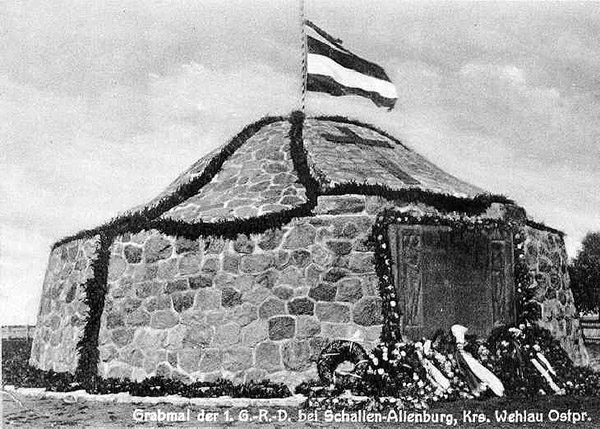
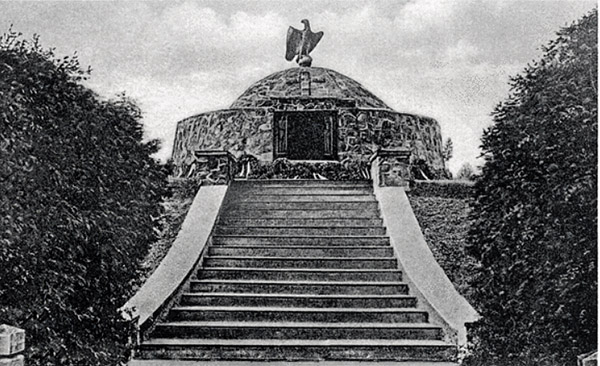
Also in the garrison towns of East Prussia, monuments were erected in honor of regimental comrades who had fallen in battles during the First World War. They were mostly erected near barracks or in park areas.
In churches of various denominations, memorial plaques appeared listing the names of parishioners who died in battle. Such plaques were also installed in public buildings. For example, plaques were installed in honor of the fallen workers at the City Theater in Tilsit, in memory of the teachers and students of the Friedrichschule in Gumbinnen, the fallen employees of the post office in Insterburg, the fallen graduates of the Kneiphof Gymnasium in Königberg, and many others.
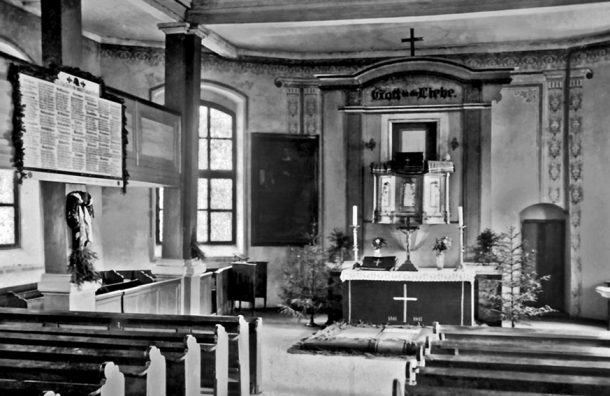
Somewhat unusual monuments of the First World War were the so-called "iron soldiers". "Warrior in iron", "iron soldier" or "man of nails" - a symbol of German propaganda during the First World War. In essence, it was a charity event aimed at collecting funds for the needs of the front, treatment of the wounded or assistance to the families of the dead.
By the beginning of World War II, there were over 2,200 military graves from 1914-15 in East Prussia, as well as over 150 different monuments dedicated to the events of World War I. All of them were in excellent condition and served as a silent reminder of those events.
Sources:
Dehnen M. The war in East Germany from 1914/15. Wurzburg, 1966
Dehnen M., Raschdorff W. Heldenfriedhof in East Germany. Königsberg, 1939.
"Kriegergräber im Felde und Daheim" Journal of the German Works 1916/17. Munich, 1917.
"Kriegergräber. Comments on the Frage: We are talking about our death threats»
Bildarchive
